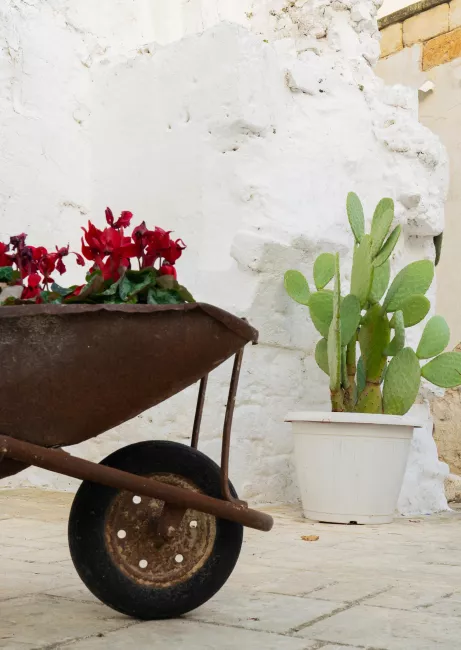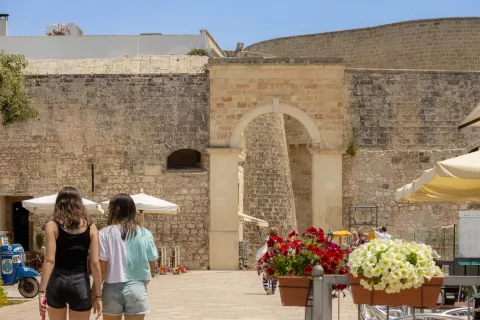
The easternmost city of Italy, Otranto, is one of the cities of Salento known to tourists from all over the world: it is lively and full of people in summer, as suggestive as a winter nativity scene. Its charm is a natural gift of centuries of history and even today Otranto is a meeting point between the cultures of the Mediterranean.
Otranto is located in the valley of the river Idro and for this reason the Greeks called it Hydros , while it was Hydruntum for the Romans. A long series of peoples and cultures dominated the city, leaving their mark. It was conquered by the Lombards, the Byzantines, the Angevins, the Aragonese and besieged by the Turks, it was even under the reign of Venice and the French dominion.
Porta Terra: entrance to the historic center
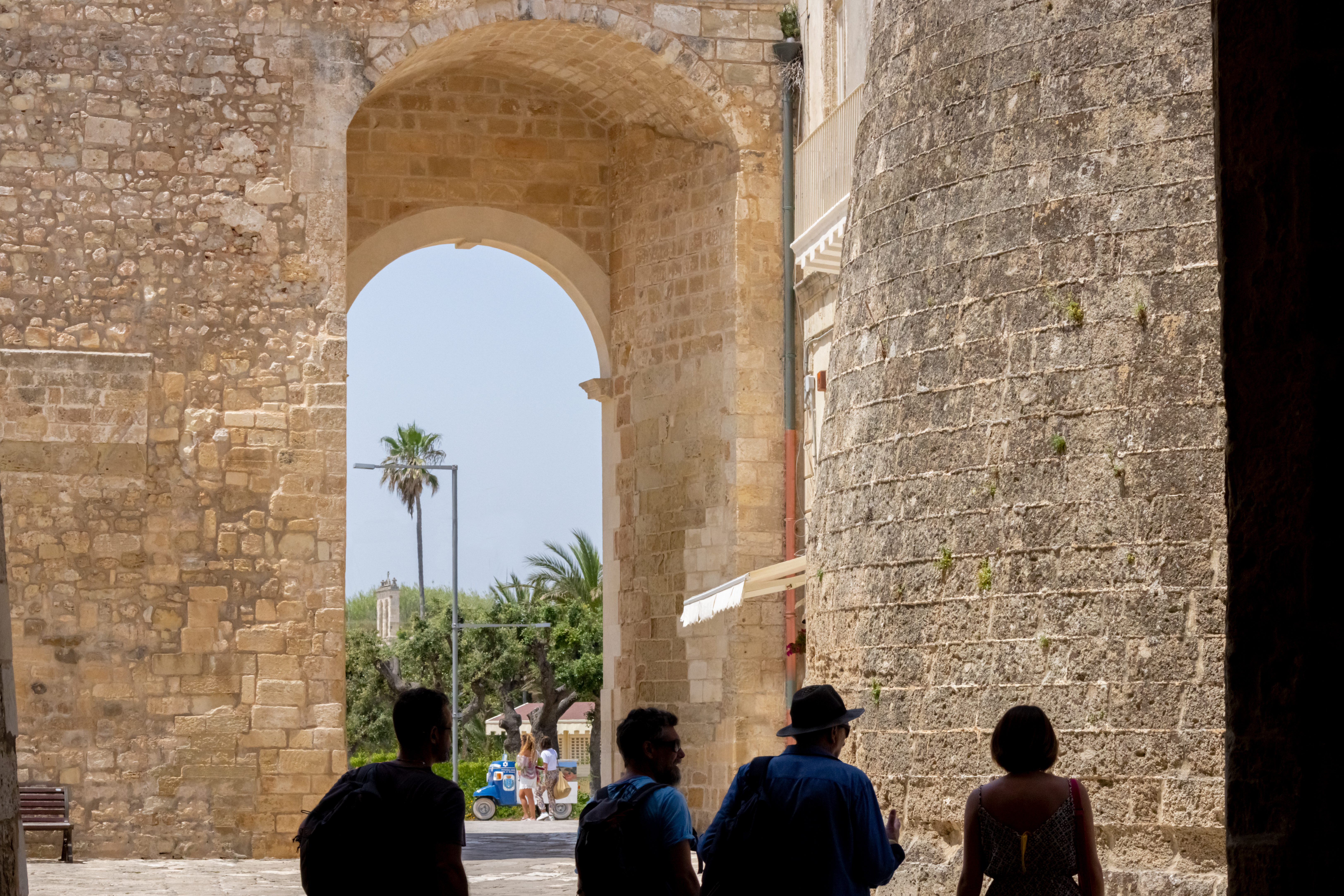
The modern city of Otranto extends around the ancient village, which immediately appears as a fortified city. The ancient part is enclosed by the defensive walls, one of the access points is the Porta Terra which leads to the passage through the Alfonsina Tower. Inside the village the alleys rise and fall, narrow and widen, often you find yourself in closed streets and at other times, however, they open onto unexpected views.
Otranto has a charm that is impossible to remain indifferent to: in every corner or street there are shops, restaurants, bars and there are also churches. It is both a city that is alive and still in time.
The Cathedral of Otranto
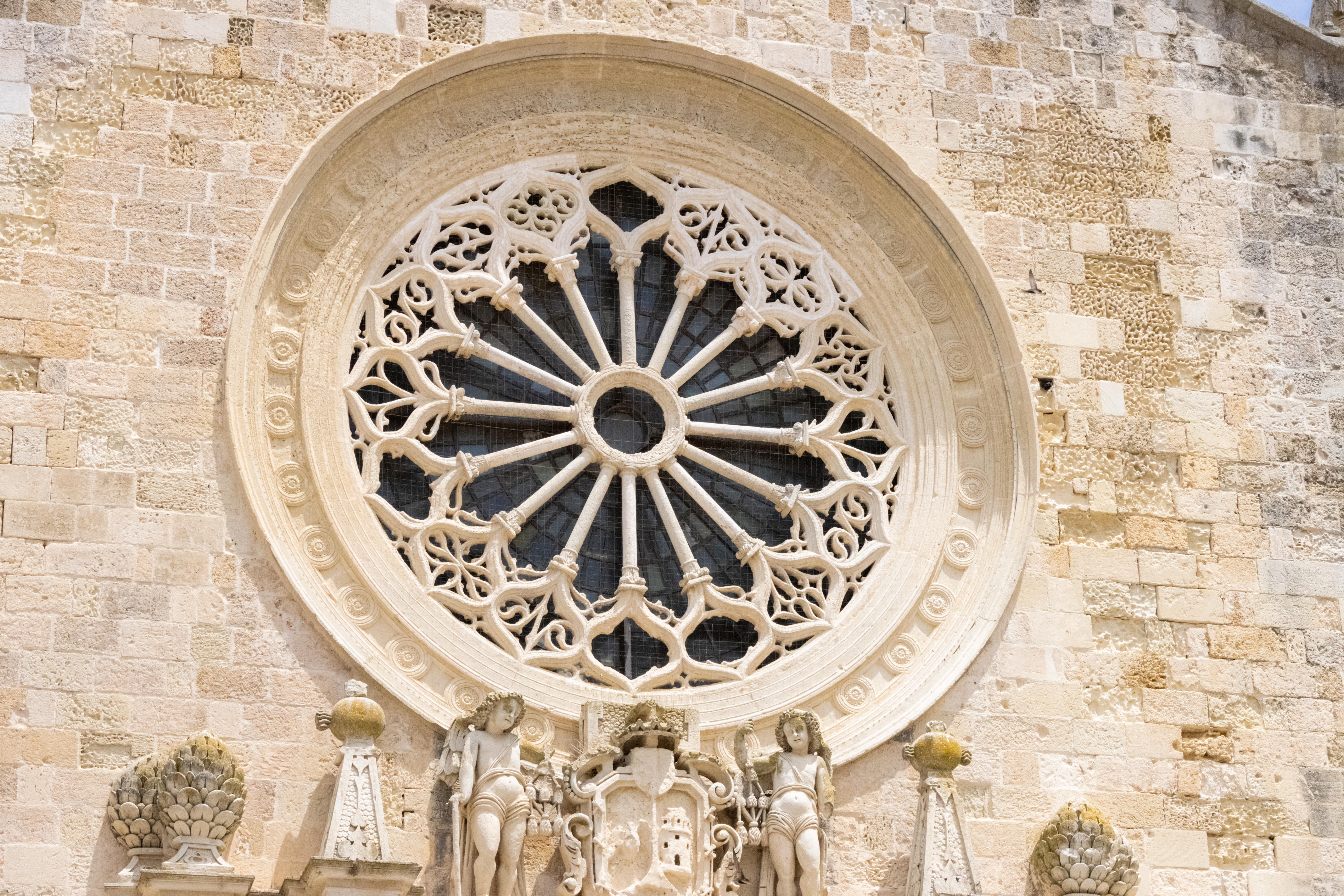
From the main entrance you can reach, along via Basilica, the Cathedral of Otranto, one of the symbolic monuments of the city and of Salento. Its architecture is a synthesis of different architectural styles that include Byzantine, Paleochristian and Romanesque elements. Inside there is a masterpiece of medieval art, a mosaic floor (1163-1165) depicting a majestic Tree of Life . The cathedral also houses the relics of the Holy Martyrs of Otranto and the city is devoted to them.
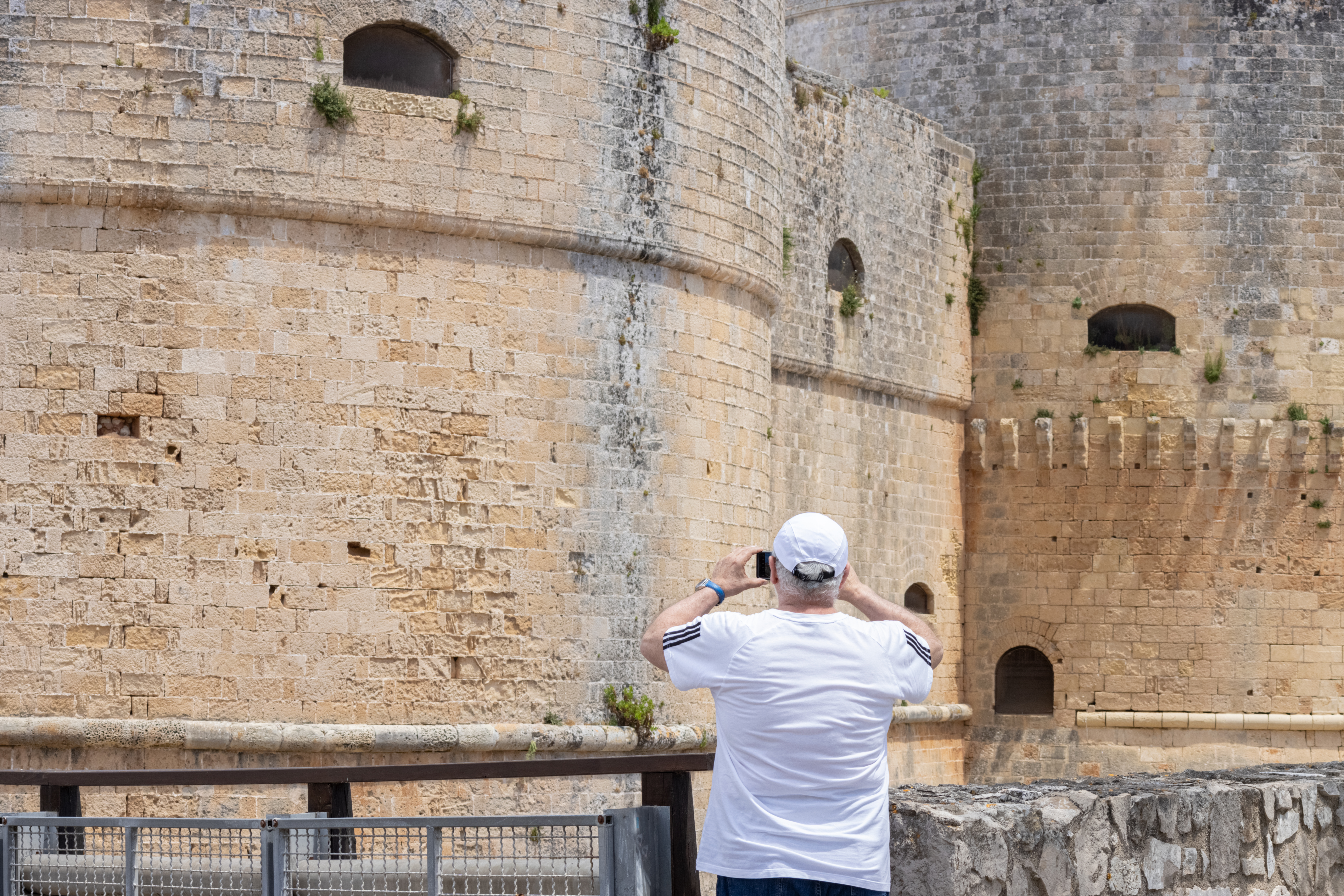
In the direction of Via Cenobio Basiliano, you arrive at the Castello Aragonese , the defensive stronghold of the city, today a space open to national and international events and exhibitions. The current entrance to the Castle was a drawbridge, the only access point inside because a moat extends along the entire perimeter of the Castle, now open to the public for urban walks.
